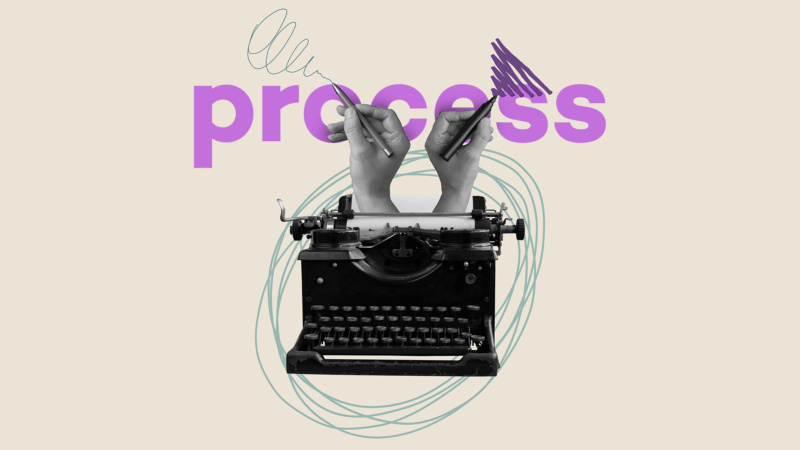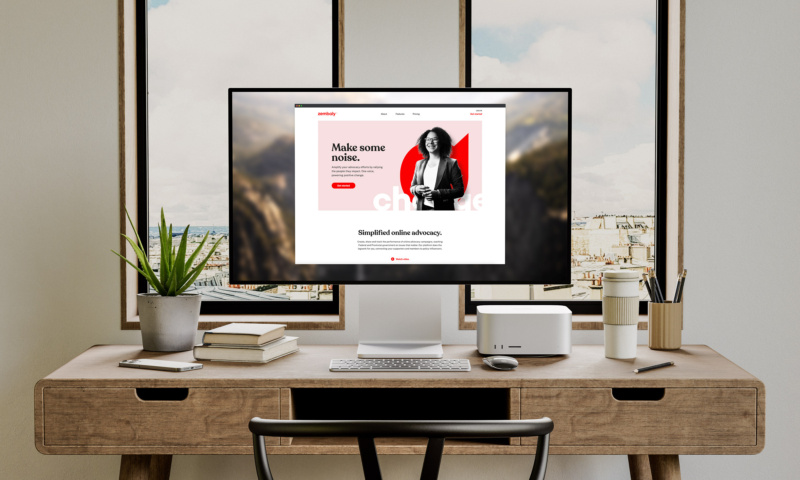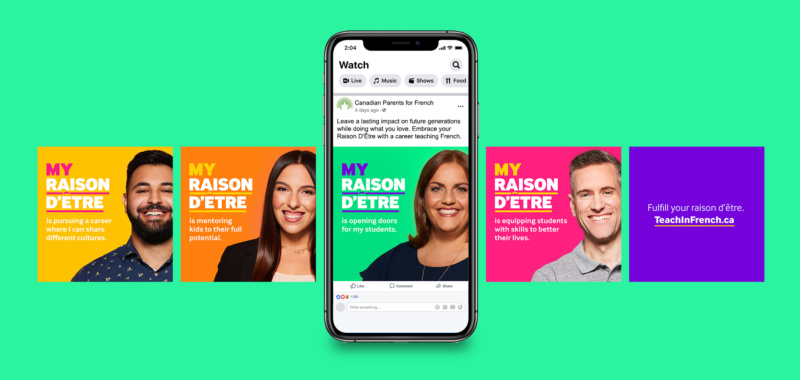The Creative Process: A Love Affair Between Copy and Design

The truth is out. Everybody knows copy and design are in bed together. That they’re equal parts of a whole. That neither is more important than the other.
But who makes the first move when it comes to getting creative?
That’s the juicy bit: how content and design teams work together. Specifically, the creative process between copywriters and designers. To shed light on this dynamic affair, let’s dive into the working relationships within the creative team at Alphabet®.
Tying the knot between copy and design
Copy and design are a power couple. An unbeatable duo with the ability to capture hearts, captivate minds, and convert observers into fans.
And their secret to a long-lasting, passionate relationship? Collaboration.
At its core, collaboration is about mutual respect. It’s about writers and designers enhancing each others’ work. A bold headline may evoke emotions, but design brings them to life. A beautiful landing page may seize attention, but persuasive copy inspires action.
“Great creative is when copy and design create synergy. Supporting and enhancing each other, not taking away from each other.”
Yang Li, Senior Art Director
Throughout the creative process, copywriters and designers at Alphabet® work hand-in-hand, from ideation to concept development to creating final deliverables. Doing so creates autonomy among the team and reduces obstacles down the road.
Digital Media Designer Chris Chai uses the promotional video for our new online advocacy tool, Zembaly, as an example: “Expectations and ideas changed from the initial storyboard. Scripts needed to be rewritten and animations redone. But the entire team was involved, making it easier to get buy-in and shift directions quickly.”

Communication and teamwork are key to any relationship. This means being open, letting go of ego, and working towards a shared goal – producing the most impactful work possible for your clients.
“It’s the difference between good creative and great creative. Great creative doesn’t happen when teams work in silos.”
Chris Campeau, Senior Writer
When design leads copy
Sometimes design drives the creative process.
- When things like heading lengths, character counts, and sentence structure are determined by the deliverable
- When client requirements (e.g., partner logos, photography) and artwork space dictate copy
“It’s about finding balance,” according to Senior Production Artist Cindy LaGarde. “Finding where the designer and writer can compromise.”
She points out a recent campaign for the Canadian Construction Association (CCA) and the Canadian Apprenticeship Forum (CAF). The campaign included print and digital ads in various sizes. Content Strategist Meagan Kelly wrote copy based on the constraints of each medium, expanding and trimming where necessary without losing the client’s key message.
A similar approach guided Meagan when working on the My Raison D’Être campaign with Canadian Parents for French (CPF). Design led the way, but team members worked closely to reduce miscommunication and the number of iterations. The result was a smoother process with fewer changes to the assets – and, ultimately, two successful campaigns for our clients.

From a holistic approach to work and creating a 360° brand to leading an effective brainstorm, Meagan shares her expertise on the Alphabet® blog.
If in doubt, wire it out
Another instance of a design-driven approach is wireframing a landing page. Landing pages are less restrictive to copywriters, but a rough outline of the design is a great place to start.
Wireframes break the page into sections, outlining images, graphics, whitespace, and text blocks. Placeholder text (lorem ipsum) isn’t always necessary, though it’s helpful to visualize content density. At a glance, the writer knows:
- where headings and subheadings are needed and how long they can be;
- where body copy can be long form and where it needs to be tight;
- where calls-to-action (CTAs) are placed and how the page flows;
- where copy is needed to support imagery and video; and
- where whitespace and design support the copy.
Wireframes often change as the project progresses. Senior Art Director Yang Li coined the term ‘slop-ups’ (sloppy mock-ups) to describe this internal process: “We share rough drafts early in the creative process to unify our approach and clarify direction from the onset.”
When copy leads design
Sometimes a copy-driven approach is best – say, for instance, when long-form messaging is required. Here, instead of the ad size dictating the copy, the copy dictates the advertising channel, format, and size.
This steers design by providing parameters to work within. Let’s explore three more ways copy influences design:
1. Message hierarchy
Effective copy establishes a clear hierarchy of information, guiding the designer to prioritize and structure messaging accordingly.
In The Adweek Copywriting Handbook, direct response copywriting great Joseph Sugarman writes, “All the elements in an advertisement are primarily designed to do one thing and one thing only: get you to read the first sentence of your copy.”
Sugarman believes the main goal of design is to move the audience to and through your copy. That it sets the stage for copy to communicate your offer and persuades people to act.
“Your ad layout and the first few paragraphs of your ad must create the buying environment most conducive to the sale of your product or service.”
Joseph Sugarman, The Adweek Copywriting Handbook
2. CTAs and visual enhancements
Language can inspire visual elements that complement copy and influence the design of calls-to-action.
For example, CTAs like “BUY NOW” and subheads like “Only 5 spots remain!” are used to create urgency and scarcity. So, their design should follow suit. Colours like red, yellow, and orange can be used to trigger energy and excitement, while bold and italicized fonts are ways to emphasize important copy.
Creating cognitive dissonance between copy and design is another way to draw attention. An example of this comes from working with the Canadian Public Affairs Channel (CPAC) during the 2020 federal election.
Senior Writer Chris Campeau explains the approach to messaging was straightforward out of the gate: “…to communicate, quickly, the value of CPAC’s unbiased coverage in helping Canadians make an informed decision on election day.”
The copy needed to be clear and concise. The creative needed to be impactful. This led the team to use unexpected graphical elements to communicate CPAC’s value in a more compelling way, instead of relying solely on election-related visuals.
3. Tone and voice
High-level brand messaging and positioning play a key role in design choices – when establishing a cohesive brand identity and when developing marketing assets and campaign deliverables.
Whether you’re working on an ad or a website, messaging frameworks impact the overall design aesthetic, from colour palette and typography to imagery and whitespace. Is the brand playful and casual? Is it innovative, caring, or serious?
The goal is to create a holistic experience for the audience by aligning look and feel with tone and voice in each piece of creative.
Tone sets the mood and atmosphere while voice adds personality. Together, they guide design to help you craft a resonant narrative, with each elementing working harmoniously to engage the audience and influence behaviour.
Working together with Alphabet®
Collaboration is baked into our creative process. But it doesn’t stop at copy and design. When you partner with Alphabet®, you’re involved each step of the way. Get in touch to see how it all comes together to positively impact your business, communities, customers, and industry.




